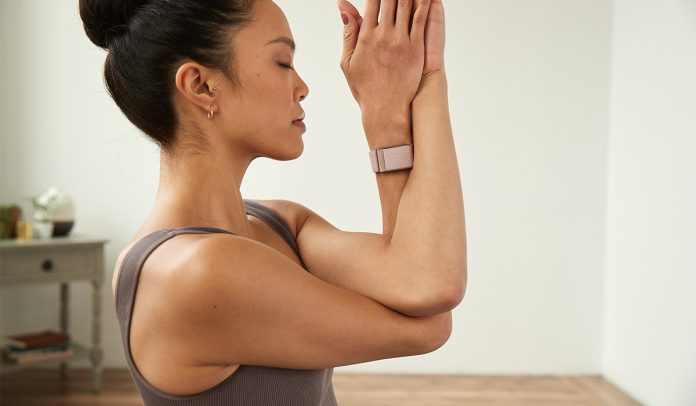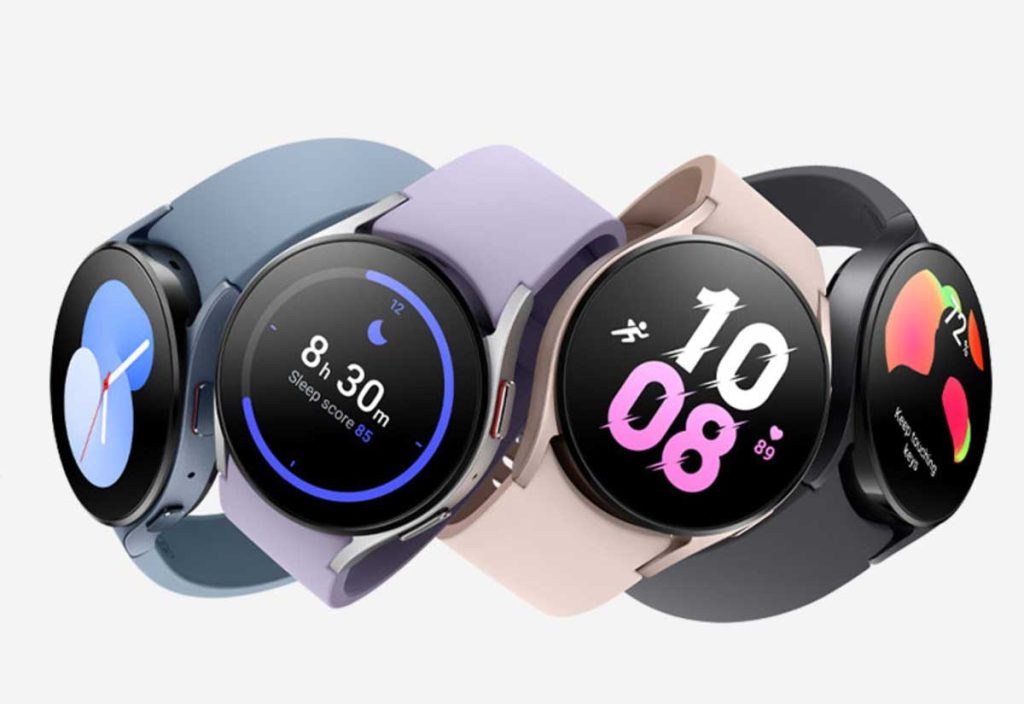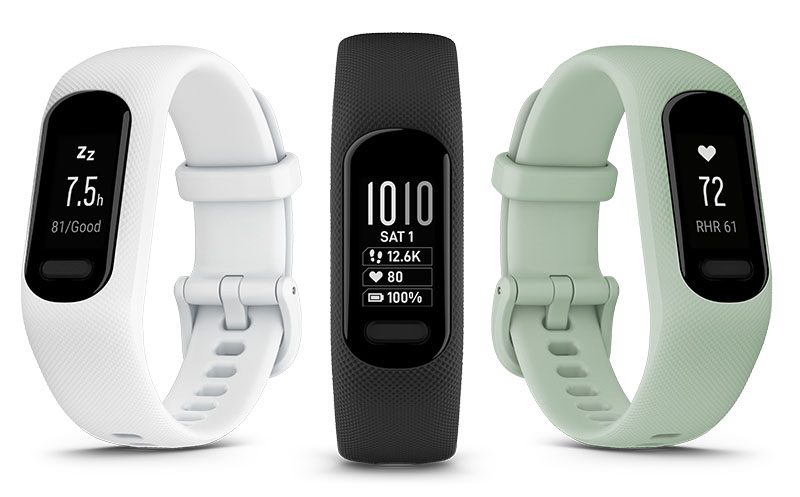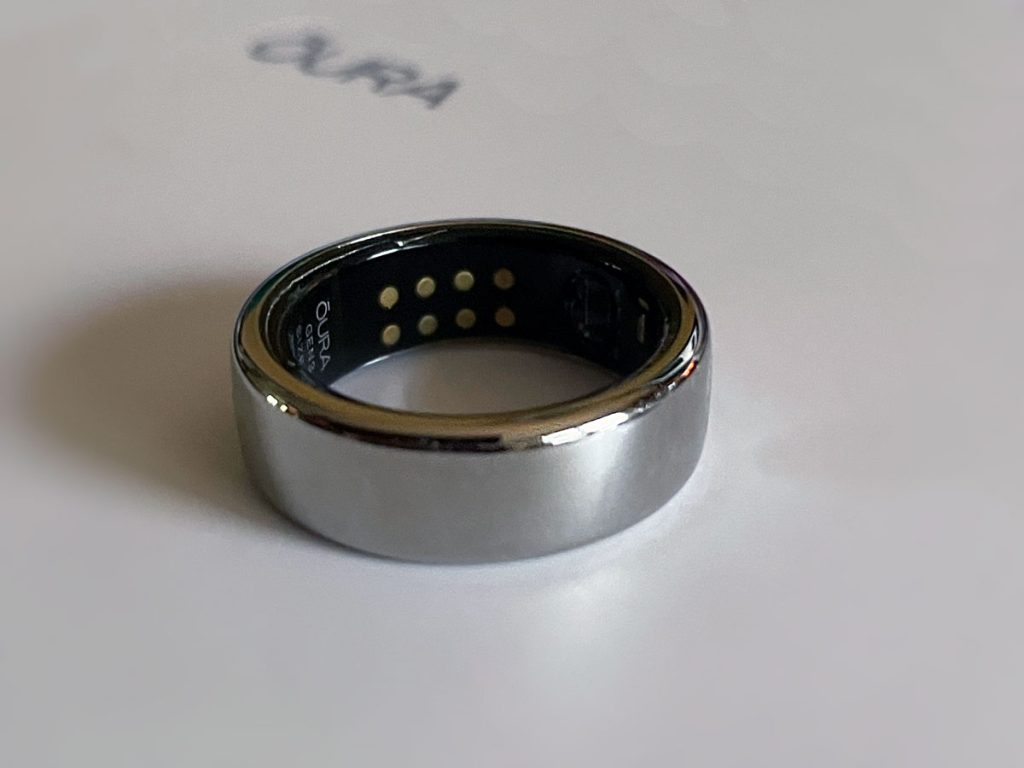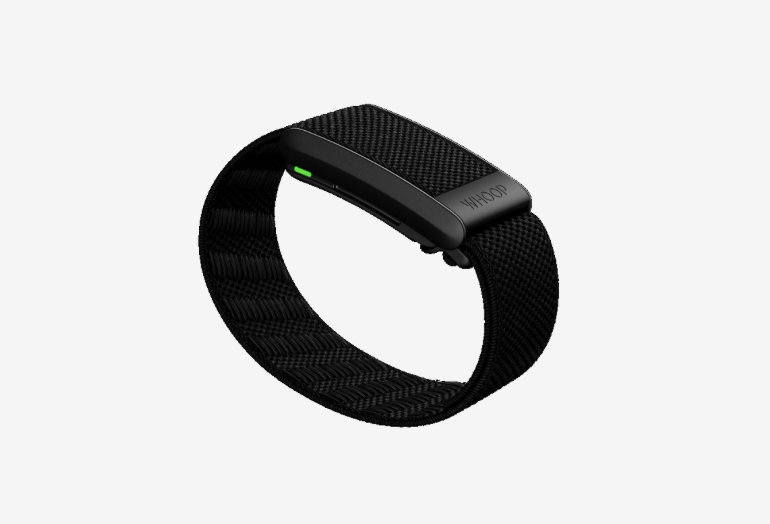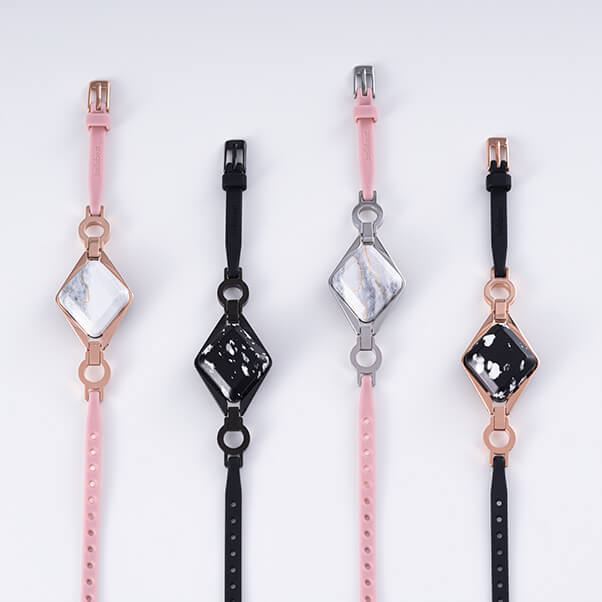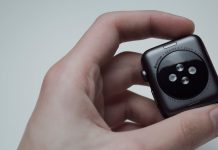It’s safe to say that Fitbit owners aren’t happy. If you fall into that camp and you’re looking for the best alternative to Fitbit, we’ve collected some of the best or most unique options on the market.
Google purchased Fitbit in 2021, and since then, many users would say that it’s been taking the company in the wrong direction.
Between reports of mass app crashes and Google removing beloved features like streaming or storing music via third-party apps and getting rid of challenges and adventures, Fitbit owners have a right to be upset with the direction the company and its wearables are taking.
And if you own an iPhone running software older than iOS 15, you won’t even be able to update the Fitbit app to its latest version because it now requires iOS 15 and above.
Luckily, Fitbit is not the only manufacturer of fitness trackers or smartwatches. Here are our recommendations for some of the best alternatives to Fitbit by category.
Contents
Related reading
- Need an alternative to Fitbit groups and challenges? Try these two cross-platform apps
- 7 of the best fitness trackers for aquacise and water aerobics
- 5 Best fitness gear for iPhone users this year
As an Amazon Associate, we earn from qualifying purchases using links in this post.
Smartwatch alternatives to Fitbit 
If you’re coming from a Fitbit smartwatch like the Versa or Sense series, the most obvious alternative is another smartwatch. There are many on the market, but you could argue that the following options are the best.
One advantage of these other brands (Apple, Samsung, Garmin) is that you don’t have to additionally pay for a premium subscription to see all your health and fitness stats–all your stats are included in the companion apps!
For folks that have used Fitbits for years and love how easy it is to see your daily step or distance count on the Fitbit’s clock face and inside the Fitbit app, there is a learning curve to these different brands.
None of them offer the simplicity of Fitbit (at least not yet.) So be prepared to spend some time getting to know your new device and its app(s.) In particular, you’ll want to edit the watch face to show your step count and any other metrics (heart rate, distance, date, weather, etc.) that you loved seeing on your Fitbit!
Apple Watch
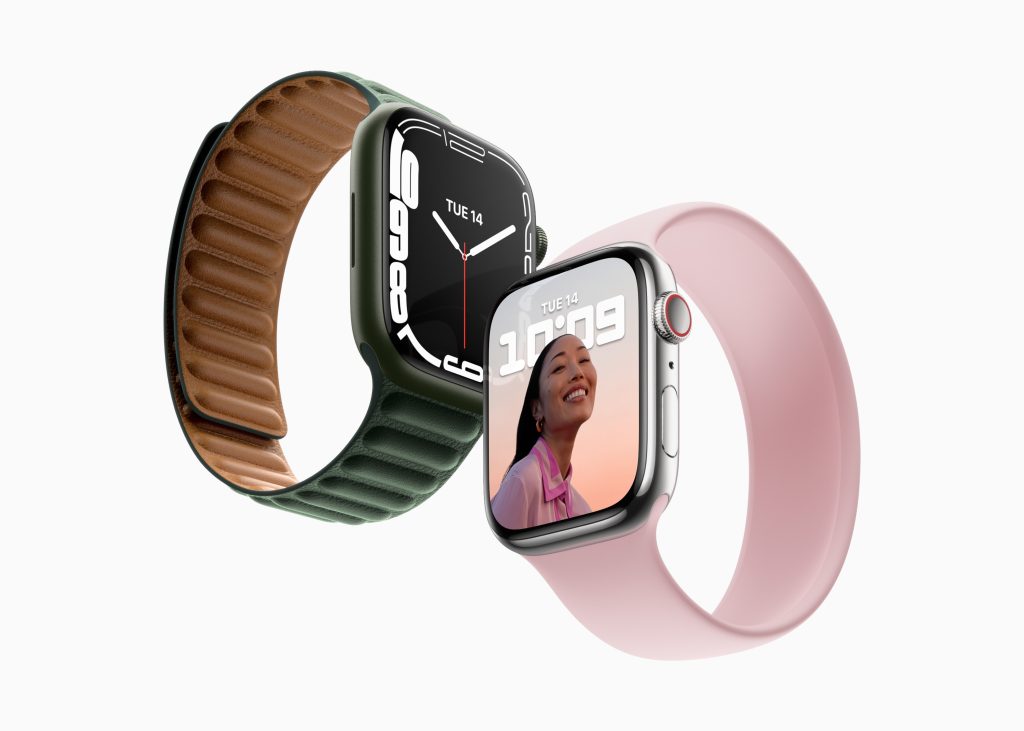
If you own an iPhone, the Apple Watch is by far the best choice. This is a feature-packed smartwatch that integrates incredibly cleanly into the Apple ecosystem. It packs fitness, health, communications, and other features into an attractive form.
Plus, you can stream or store music on your Apple Watch and use third-party apps like Spotify.
Although not the cheapest on this list, the Apple Watch has robust activity and workout tracking modes. Its heart rate monitor is generally very accurate, so you can be sure you’re getting the best data.
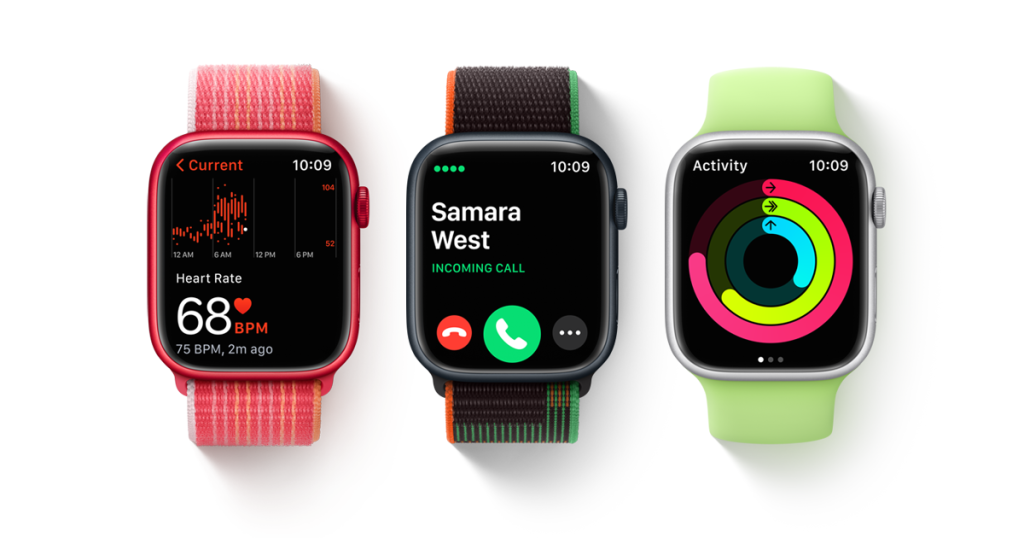
Instead of the Fitbit app, you’ll use Apple’s Activity app on Apple Watch, the Fitness app on iPhone, and the Apple Health app.
One frequent complaint from former Fitbit users is that the Apple Watch doesn’t show your tracked steps as neatly on the watch face or in the Activity/Fitness apps.
What we found is that you can add some third-party apps to your watch to see your step counts right on your watch face–and it’s pretty easy to do so.
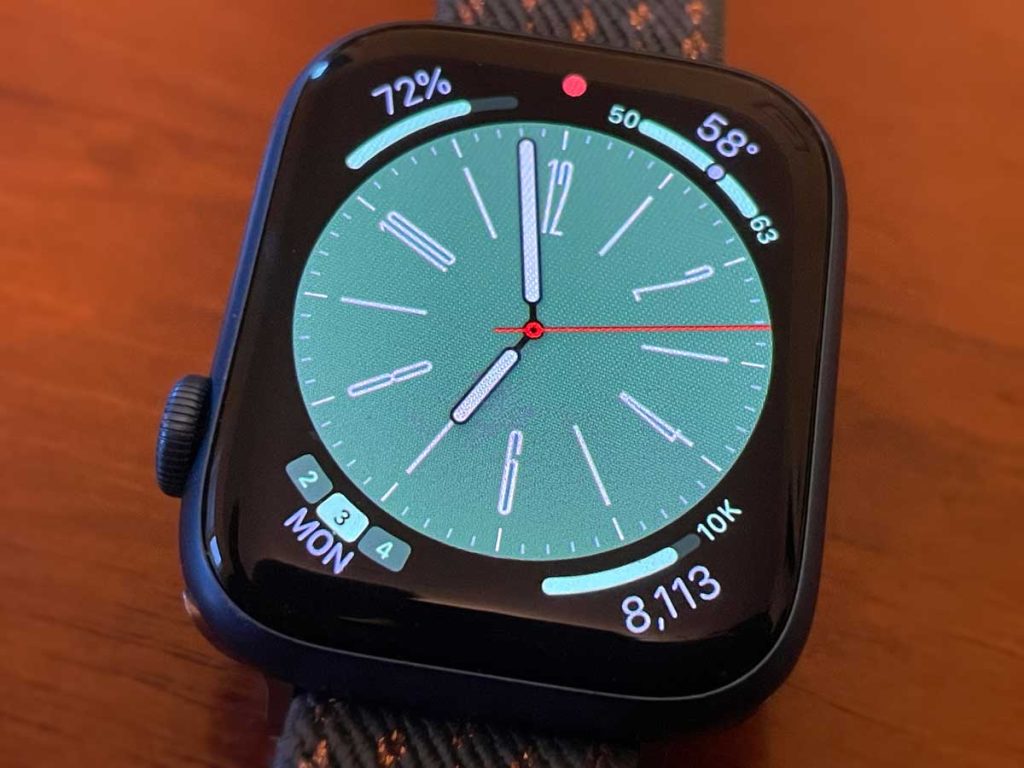
A bonus is how seamlessly it integrates into Apple Fitness+ — a subscription service that lets you practice a range of guided workouts with dedicated instructors.
The major downside of the Apple Watch vs. Fitbit is the battery life. Apple Watch rarely lasts more than one day without needing recharging.
Samsung Galaxy Watch 5 
Fitbit owners in the Samsung Galaxy ecosystem may opt for the Samsung Galaxy Watch. This is to Samsung’s lineup of products as the Apple Watch is to Apple — it features excellent integration with the Galaxy range of products, and their newest watches, including the Watch 5, also work with Android phones.
Like the Apple Watch, this is a full smartwatch with many features. It has fitness tracking, a heart rate monitor, body composition monitoring, and more. You can even track your sleep and blood pressure using the watch.
Plus, you can stream or store music on your Samsung Galaxy Watch and use third-party apps like Spotify.
With the Samsung Galaxy Watch 5 (or any Google Wear OS Samsung Watch), you can track your activity and health using the Samsung Health app or the Google Fit app.
To see your steps on your watch, you add Samsung Health’s Step or Google Fit’s Goals as a widget or as a complication to your watch face.
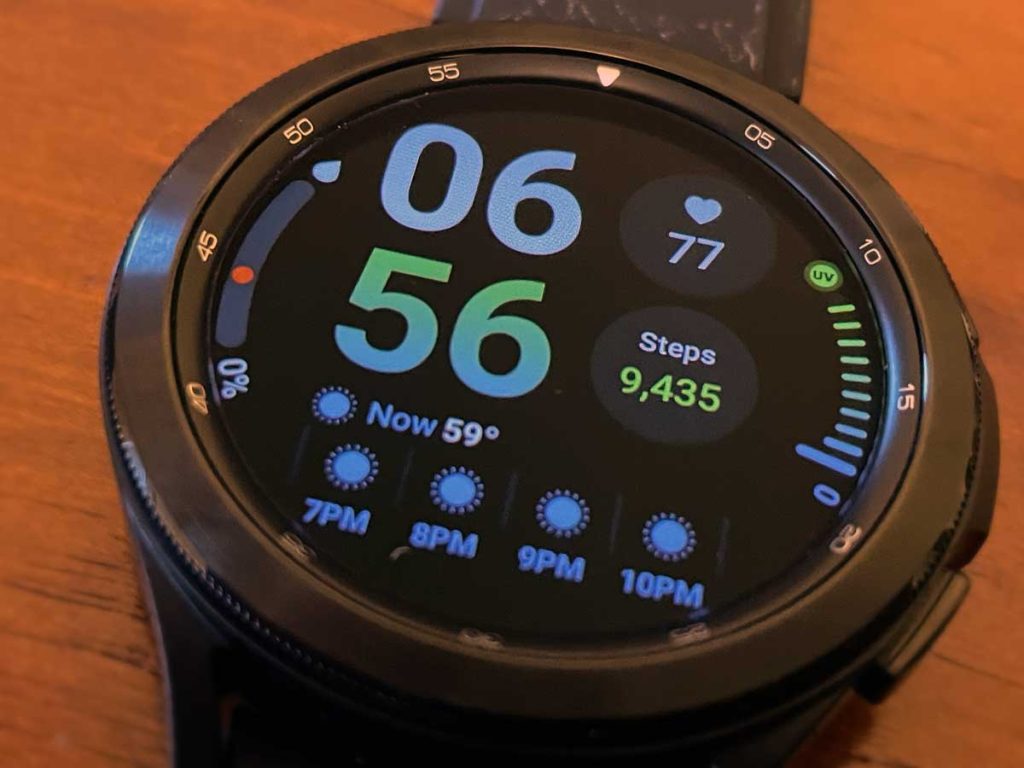
If you’re a Samsung Galaxy phone owner, the Galaxy Watch 5 is probably the best smartwatch option for you. You’re still technically using Google’s software on Android and WearOS. But at least there isn’t direct control here like there is for Fitbit.
One major downside of the Samsung Galaxy Watch vs. Fitbit is its battery life. Samsung Galaxy Watches need daily charging.
Garmin Venu 2 Plus
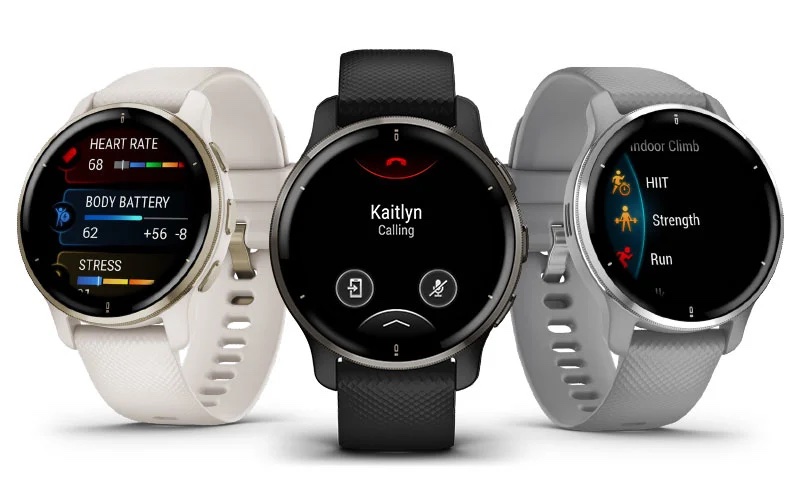
For those that loved their Fitbit’s battery life, consider a Garmin, particularly the Garmin Venu 2 series.
Garmin is one of the most promising competitors to not just Fitbit but Apple and Samsung wearables too. You can think of the Garmin Venu 2 Plus as the company’s best Fitbit smartwatch replacement with a full slate of fitness, health, connectivity, and productivity features.
You can also stream or store music on your Garmin Venu 2 Plus and even use third-party apps like Spotify.
The Venu 2 Plus packs incredible workout and fitness tracking capabilities — including more sports modes than Apple Watch. Garmin’s platform is agnostic and works with both iOS and Android.
Although it doesn’t feature deep integration with your paired phone like an Apple Watch or Samsung Galaxy Watch, it’s compatible with both Siri and Google Assistant and lets you answer phone calls from your wrist using its built-in speaker and microphone (available on the Venu 2 Plus model only.)
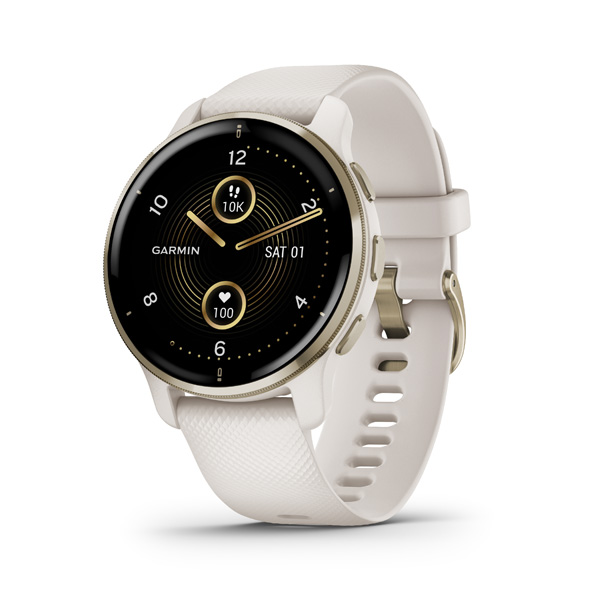
Garmin’s app, called Garmin Connect, isn’t as clean or intuitive as the Fitbit app, but it offers a lot of free functionality and is rich with all types of fitness and health data.
The Garmin also has a trick up its sleeve: with non-GPS tracking enabled, it can last up to nine days on a single battery charge. That’s likely similar to your Fitbit experience, which for many of us, is a major plus!
To see your step count, you can customize your Venu’s watch faces to display your daily steps (distance or another activity metric.) And your watch’s My Day widget also shows your total steps.
Fitness band alternatives to Fitbit 
Although the smartwatch market is dominated by Apple, Samsung, Garmin, and Fitbit, many other players are in the fitness band market. So if you loved your Fitbit Inspire or Charge series, you’ll likely find another brand of fitness band to suit your needs.
The strength of fitness bands vs. watches is that they are smaller and more discrete and tend to have much longer battery life. To get this long life, they usually sacrifice many of the “smart” features like built-in GPS, music streaming and storage, call and texting options, and many do not support third-party apps.
If your goal is to track your fitness and some health metrics without needing (or caring) about built-in GPS, communication, and other smart features, a fitness band is often the best (and more affordable) choice.
These are a few of the best options to replace your Fitbit tracker (Inspire or Charge series.)
Garmin Vivosmart 5 
The Garmin Vivosmart 5 is our favorite and one of the best simple fitness band alternatives to Fitbit. The main downside is that it does not include built-in GPS or a color screen.
This comfortable and more-than-barebones fitness tracker stays out of the way until you need it to track your heart rate, activity, and energy levels. While it doesn’t have GPS built-in, it can connect to your phone’s GPS.
You also won’t see the ECG feature and EDA sensor that’s available on the Fitbit Charge 5.
As with other Garmin products, the Vivosmart 5 uses the free Garmin Connect app, and there’s a huge list of preloaded sports and workouts available.
You also get some advanced health metrics like blood oxygen saturation, respiratory rate, sleep tracking, women’s health tracking, Garmin’s signature body battery energy monitor, and a fitness age analysis.
The small Grayscale OLED screen shows you some key health metrics and previews for texts and notifications. It also packs an impressive battery life lasting up to 7 days on a single charge.
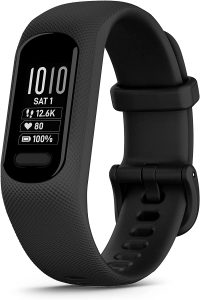
Again, the Garmin app isn’t perfect, but it does offer quite a bit without a paywall. This device won’t replace your smartwatch, but it proves to be a worthy contender that can go toe-to-toe with similarly priced and spec’d Fitbit activity trackers, like the Charge or Inspire series.
Amazfit Band 7
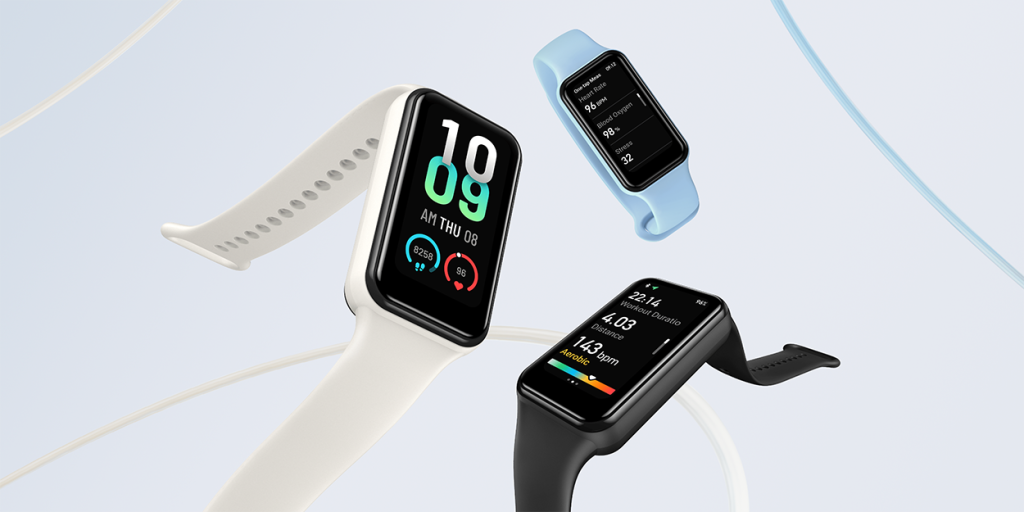
If you love your Fitbit Charge or Inspire tracker and want to replace it with another fitness band rather than a watch, you’ll want to look at Amazfit’s Bands.
Sometimes, a low price point is the biggest deciding factor when purchasing a replacement for a Fitbit. And when it comes to affordability, you won’t be able to find a fitness tracker like the Amazfit Band 7 for the cost you’ll pay. This tracker is about fifty dollars, and you can often find it for cheaper.
For that price, you get heart rate monitoring, sleep tracking, fitness and activity tracking, and even SpO2 and stress level monitoring. And it’s easy to track your steps or distance on your watch face using complications.
Plus, you also get up to 18 days of battery life per charge!
The downside is that you don’t get built-in GPS or the ECG feature and EDA sensor available on the Fitbit Charge 5.
The Amazfit also offers more than 120 preloaded sports and workouts and compatibility with Amazon Alexa.

Instead of the Fitbit app, Amazfit uses the Zepp Life app, where you can review your health and activity information and trends. There’s a free version and a $10/month Zepp Aura Premium subscription that removes advertising and personalizes your sleep experience and other metrics.
It’s hard to argue with all of that with just $50. This isn’t going to be the smoothest or most feature-rich fitness tracker on the market, but you’d be hard-pressed to find another activity band that offers this much bang for your buck.
Garmin Vívomove Sport
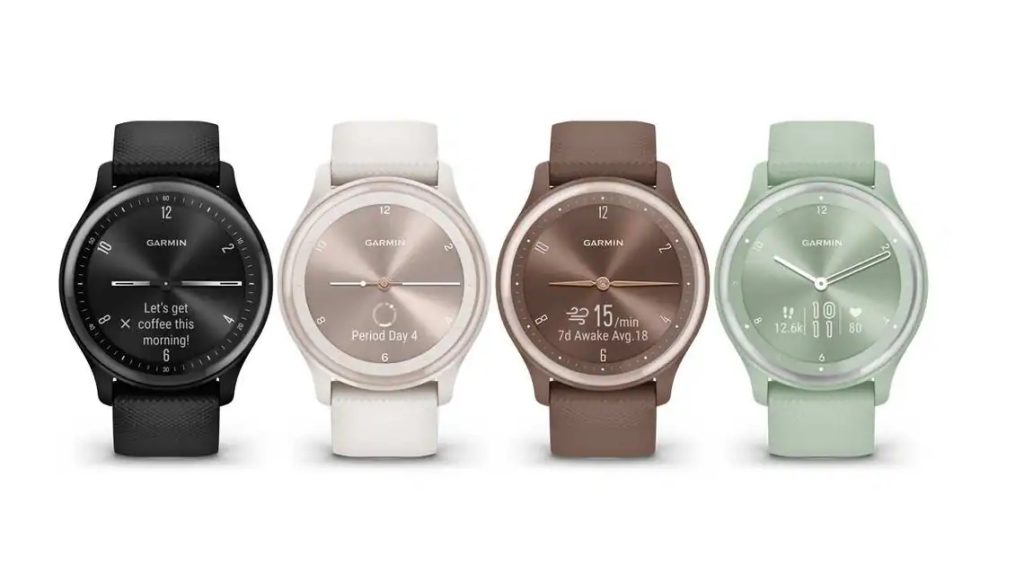
Most fitness trackers and smartwatches have a look. Whether you like it or not, their aesthetics are much more “tech device” than “analog watch.” If that’s not the vibe you’re going for, then the Garmin Vivomove Sport may be your best option.
We put this under the tracker section because it shares more functionality with a fitness band than a true smartwatch in that it doesn’t include built-in GPS, but it can use your phone’s GPS.
However, it’ll track your activities, let you read texts from your wrist, and pay for stuff using tap-to-pay.
Although it’s a full-fledged fitness tracker, the styling is much more classic. It’s a tech product that looks like an analog watch at first — and second — glance. Because of that, it’s a device representing the best of both worlds.
Unique alternatives to Fitbit
Ditching a traditional smartwatch or fitness tracker is an opportunity to try something different. Here are some fitness tracking options that go beyond a simple wrist-worn band or watch.
Oura Ring 
The Oura Ring has a lot going for it. It’s undoubtedly the leader among smart ring fitness and health tracking devices. This small and attractive device can monitor many different metrics in the background — from heart rate to body temperature to activity.
Additionally, the Oura Ring is one of the best wearable sleep-tracking devices you can also take into your day-to-day life and comes with menstrual tracking, calorie tracking, and blood oxygen tracking. With incredible water resistance, you can wear the Oura Ring in the shower with little issue.
The downsides include that you won’t be able to see any data on the device itself — it’s a ring that lacks a screen, after all. You’ll also need to pay a $5.99 monthly subscription fee to take advantage of the health data it tracks.
Oura Ring starts are $299 and are available on the Oura website.
Whoop 4.0 
The Whoop 4.0 is a wearable that you wear on your wrist. Besides that, it has little in common with smartwatches and fitness trackers. For one, you don’t buy the Whoop. Instead, you pay a monthly subscription fee, and the device comes free.
There’s also no screen on the Whoop 4.0 itself — all data tracking happens on the companion app. It’s just a strip of fabric with sensors that you wear on your wrist. The main draw here is that the Whoop 4.0 is designed to measure your progress and fitness over time.
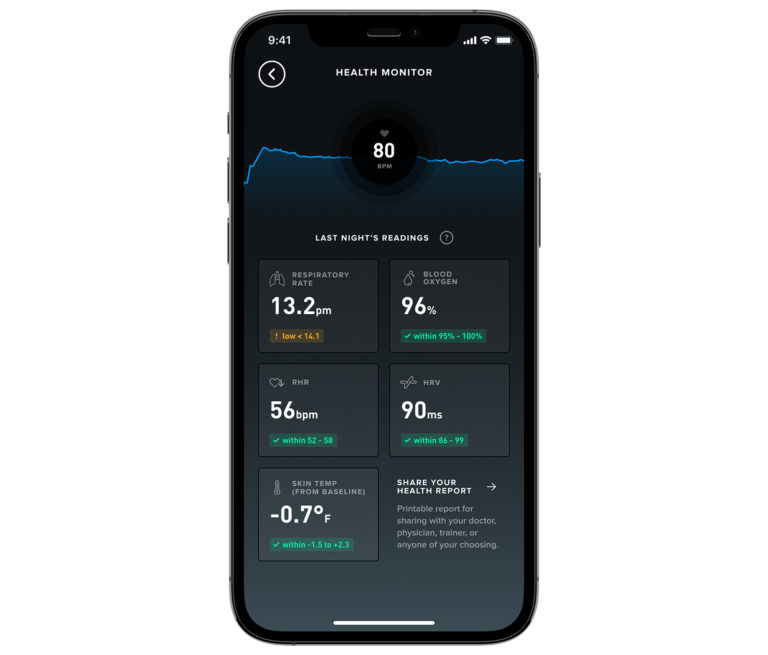
Compared to most other fitness trackers, the Whoop 4.0 provides a plethora of in-depth data and metrics. While it doesn’t track steps, it’ll give you insight into activity performance, strain, and recovery. This is geared toward people serious about training regimens — many of the data points might be too advanced for the average user.
Whoop costs $29.99 a month, and a 12-month contract is needed. It’s available here.
Bellabeat Ivy 
Most technology products can seem like they’re designed with men in mind and with women as an afterthought. The Bellabeat Ivy doesn’t have that issue — it’s a tracker specifically designed and engineered for women.
To that end, the Bellabeat Ivy focuses a lot on women’s cycle tracking.
It also has an attractive design that looks more like jewelry than a tech product. And yes, it’ll also track your heart rate, steps, activity, and sleep. What’s unique is that it applies a holistic wellness approach to your well-being by identifying gaps in your self-care and wellness regimen.
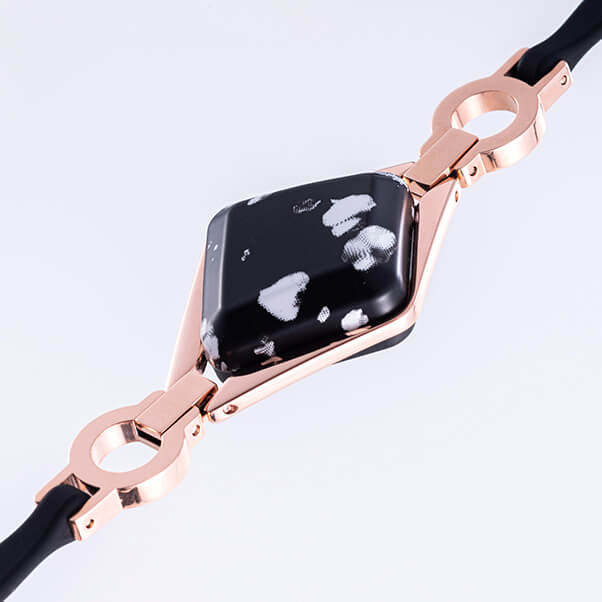
This isn’t the cheapest device around for what it offers. It also lacks a lot of the connectivity features of a smartwatch. For the right user, however, the Bellabeat Iprovidesers a combination of features that are hard to find in a single product.
Bellabeat Ivy costs $249 and is available here.
Is it time to leave Fitbit behind?

If you’re feeling frustrated about music streaming and storage, Activity Challenges, or open groups being removed from Fitbit, or if you have an iPhone running older software, it might be time to look for a different fitness tracking device.
Fitbit still makes great fitness tracking devices, but that doesn’t mean you have to put up with the changes that Google is making.
From obvious options like the Apple Watch or Oura Ring to more affordable devices like the Amazfit Band, there are plenty of other alternatives on the market.

